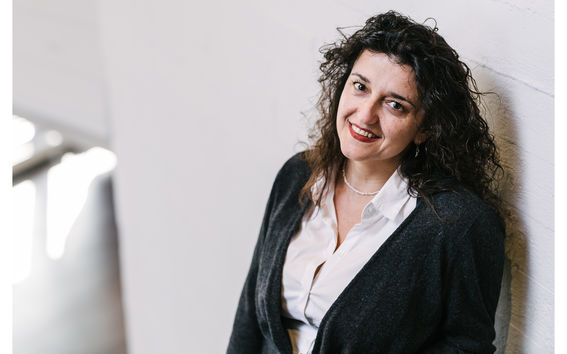Sofia Pantouvaki: A born researcher

Professor Sofia Pantouvaki, what do you research and why?
As a designer, I do both set and costume design, but my Aalto professorship focuses on costume design. Although costumes have existed for at least as long as clothing, they have only begun to be studied using research methods in systematic ways in the last couple of decades. Of course, costumes and the understanding of their significance have developed all the time, but people within the field have focused more on the practice of costume than its scholarly research.
Costume design is in my opinion a hugely fascinating field, because it involves people, observing and understanding them. As a costume designer, I prefer to speak of creating people than of creating characters – for me, costumes are much more than just pieces of clothing.
A costume is a different thing to fashion or clothing. Costumes always involve performance and an audience; the costume is not put on because it’s cold or it’s hot, but rather there is a particular plan, script and objective in mind.
How did you become a researcher?
I was born a researcher – my life has been guided by constant searching, a need to question things and dig deeper into them. In fact, I set out to do my doctoral dissertation simply because the topic was so fascinating for me – I didn’t have any particular career plans.
I came to Finland for the first time 25 years ago, through an Erasmus exchange. I chose the University of Art and Design, as it was called then, for two reasons: it was the only exchange location where it was possible to focus on the study of scenography, and Finland seemed like an exotic place. I thought that it would be a unique opportunity to get to know a country which I would be unlikely to ever return to later.
But Finland’s time came round again, and in 2012 I found myself back here. I am a romantic, and I was thinking that this is a way to give something back to the country and university which so impacted my career. In fact, it was precisely during my Erasmus exchange that I took my first costume design course. It was taught by the talented Maija Pekkanen from Helsinki City Theatre, someone who over the years has become one of my dearest friends – more like a family member, in fact.
What have been the highlights of your career?
One was undoubtedly my doctoral dissertation. The topic, which related to concentration camps, was a heavy one, and I funded the research entirely by myself – an achievement which I’m very proud of.
As a designer, I have done a lot of work for theatre, opera and ballet in Greece, Cyprus, UK, Italy and Finland. The highlights have included, in particular, a huge ballet production that I designed at the age of 28 for the Greek National Opera, which involved over 300 costumes, and the set design that I did for the Herodes Atticus Odeon in Athens. This theatre, located at the foot of the Acropolis, is unbelievably grand. For a designer, however, it is challenging because the background cannot be changed – the set and the costumes must therefore work together with the imposing monument.
The four-year FiDiPro funding which I obtained from the Academy of Finland in 2014 was also an important achievement, as it was the first time that the Academy had granted a significant amount of funding for costume research.
What is required from a researcher?
The most important thing is a deep curiosity and love for one’s research topic. Without these two things, one cannot cope with the challenges and difficult moments that inevitably come. Of course, a researcher must also be systematic and resilient. Passion, however, is undoubtedly the most important thing.
What do you expect from the future?
In the short-term, I hope to get ready the book I have been editing and to get working on my own book as well. In the future, I hope also to obtain the funding I have applied for, which would be used for innovative costume design research. As a designer and researcher, my dream is for long-term cooperation with an opera house. Music is a great source of inspiration for me, and I want to see opera further removing itself from classical representations and to get the opportunity to design more innovative opera characters, which is something we could explore through new artistic research in the future.
Sofia Pantouvaki and Aalto’s other newly tenured professors will speak about their research at the Installation Talks event to be held on 24 April. We hope to see you there!
See the program here.
- Published:
- Updated:
Read more news

Aalto ARTS alum Vidha Samya’s artwork featured at the Venice Biennale 2024
The Pavilion of Finland presents ‘The pleasures we choose’ at the 60th International Art Exhibition – La Biennale di Venezia until 24 November 2024.
IoT Forge donates EUR 1 million to the School of Engineering
The donation will be used for research and education on the Industrial Internet and digital twins.
Join us for the first Aalto Open Science Award Ceremony
All Aaltonians are welcome – no registration required!